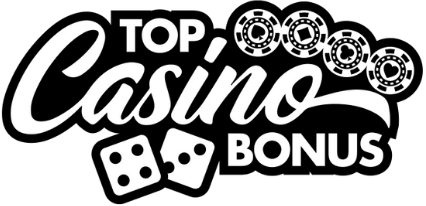How to play mahjong
Most folks these days look at a mahjong table like it’s written in hieroglyphics, four players sitting silent, shuffling tiles, clicking them with rhythmic precision like it’s some ancient ritual. Well, in many ways, it is. Mahjong isn’t just a game; it’s a finely tuned dance of skill, memory, and observation. What separates the seasoned player from the greenhorn? Patience, strategy, and a sixth sense for the rhythm of the wall.
Table of contents
Understanding mahjong fundamentals
Let me be clear: if you think mahjong is all about matching tiles like some children’s game on a phone app, you’re already walking down the wrong alley. Traditional Chinese mahjong is played with 144 tiles carved into 3 suits: Characters, Circles, and Bamboo. Then you’ve got honor tiles, Winds and Dragons, plus four flower tiles and four seasons. Those last eight? Seasoned players keep an eye on ’em, casuals ignore ’em.
Knowing the tile hierarchy
First major blade most newcomers fall on? They don’t internalize tile order. The suits move from 1 through 9. Winds go East, South, West, North, like the compass. Dragon tiles? There’s Red, Green, and White. Understanding these categories and sequencing is foundational if you ever want to hunt for a real hand, not just play defense all night.
Building a valid hand
Your final goal is to create four sets, either Pungs (3 of a kind), Chows (sequential runs in the same suit), or Kongs (4 of a kind), plus a pair. That’s your classic 14-tile Mahjong hand. Scoring varies dependin’ on the regional variant, but in a game where one hand can take 20 minutes to build, you better know if you’re fishing for the right shape.
Breaking down the gameplay flow
Every mahjong round plays like a well-composed symphony. You don’t just draw tiles and toss ‘em willy-nilly. Each tile you discard paints a story of what you’re chasing or avoiding, and your opponents are reading that story with keen eyes, if they know what they’re doing.
The dealer and the walls
The dealer, or East Wind, starts the game. Tiles are shuffled and built into four walls of 18 stacks by 2 tiles high. Players break into the wall, drawing tiles in turn. You always maintain 13 tiles in hand and draw one on your turn, that 14th tile decides whether you’re ready to declare Mahjong or dump it and pass.
Calling tiles and reading opponents
See someone discard the tile you need? You could “Pung” or “Chow”, but hold your horses, rookie. Calling exposes your hand and locks in those sets. You gain tactical information, but you lose flexibility. Many an overeager novice has blown a solid hand by showing their cards too soon. Good players only grab what they can use to go out fast or to prevent another player from winning.
Mastering mahjong strategies
Mahjong isn’t about luck, it’s about reading the table like a cartographer mapping terrain. Who’s hoarding Winds? Who discarded the 9s early? When should you pivot from building to defense? These are questions beginners overlook while chasing flashy tile sets like they’re playing a slot machine.
Offense versus defense
When I play, I’m always asking: is now the time to push or pull back? If an opponent starts calling tiles fast, you better believe they’re close to Mahjong. At that point, if you’re not drawing gold, shift lanes and deny them fuel. That 7 of Characters in your hand? If they’ve already dropped the 6 and 8, don’t feed ’em.
Discard strategy and baiting
Throwing tiles is half the game. Want to see a table squirm? Discard a tile that you already read another player wanted three turns ago. This isn’t just gameplay, it’s psychological warfare fought in silence. Learn to observe not just what’s thrown, but what’s never been touched. That’s where the truth lies.
Mahjong in the modern era
Sure, I’ve hosted games around wooden tables with incense burning and Chinese tea steeping. But these days, mahjong’s spilling into virtual lobbies and mobile apps. You’ve got online matches streamed in real-time, global tournaments, and even cash tables where you can fund your game using modern payment methods like Mastercard and Instadebit.
Adapting traditional skills to virtual formats
Moving from tile-clicks to mouse-clicks, the core remains unchanged. Bluff through discards, calculate tile probability, and read real-time chat for opponent psychology. I’ve seen bots execute programmed brilliance, but they can’t match the gut instinct of a veteran who knows when to drop a winning tile just to deny another player the win.
Safe banking in online play
If you’re diving into real stakes online, choose your platform and payment method wisely. I always recommend options with strong encryption and records. Besides the old standbys, newer digital methods like Entropay and EcoCard/EcoPayz offer convenience and security. Don’t toss your winnings down the drain with shady platforms or sketchy payment interfaces.
The global shift in virtual competition
There’s no ignoring it, more players are exploring betting on virtual sports and putting their chips down on computer simulations. But don’t confuse RNG-heavy virtual games with games like mahjong that demand real foresight, knowledge, and an edge earned over time.
Where tradition meets technology
Even as the game goes digital, etiquette and respect remain cardinal. Don’t jump into a table demanding wins, let your play earn you reputation. I’ve seen digital lobbies where one well-timed discard earns a player silent nods from opponents across continents. Mahjong, whether in smoky parlors or online platforms, is a game of shadow dances, not loud fireworks.
The soul of mahjong
At its heart, mahjong isn’t about winning tiles, it’s about mastering patience, timing, and intuition. You wait like a tiger in tall grass. You strike when no one hears a sound but the shuffle of tiles. I’ve seen players with decades under their belt lose quietly because they respected the game more than their pride.
So, you want to learn mahjong? Then leave your ego at the door. Pay attention. Respect the tiles. And never forget, the sharpest weapon at any table is the ability to read silence.





0 Comments